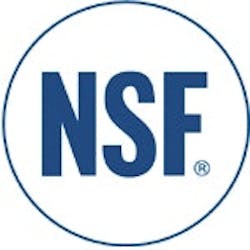New NSF American National Standard Verifies Shower Filtration Product Claims
As part of its ongoing efforts to write national standards that protect the public health, NSF International announced the adoption of the first and only American National Standard for shower filters. The standard was developed to address the need for a consensus standard for shower filters and the market need for demonstrating product performance and safety.
Free available chlorine, which is used to sanitize or disinfect a public or private water supply, can cause chlorine odors in shower water. With the development of American National Standard 177: Shower filtration systems–Aesthetic effects (NSF/ANSI 177), manufacturers can now certify water treatment devices that are designed to reduce the amount of free available chlorine to ultimately improve the aesthetic quality of shower water.
The Standard includes: evaluation to ensure that the materials are safe;
structural integrity testing to ensure product durability; free available chlorine reduction testing to verify performance; and product literature requirements.
The performance testing is conducted at elevated temperatures to reflect the use conditions of shower filters.
All shower filtration systems that meet the requirements of NSF/ANSI 177 after evaluation by NSF will bear the NSF certification mark-a mark that inspectors, health officials, manufacturers, distributors, retailers, and consumers look to for an independent, trusted confirmation that all performance and safety requirements have been met.
"This new standard further compliments the many existing NSF drinking water standards that are widely used and accepted across North America and around the world," said Tom Bruursema, general manager of the NSF Drinking Water Treatment Units Program. "NSF/ANSI 177 establishes an American National Standard as the basis for evaluating this unique category of water treatment devices, while helping to prevent misleading advertising and providing consistent label information to consumers."
The standard was developed by the NSF Joint Committee on Drinking Water Treatment Units, which is composed of a balanced representation of public health regulators, manufacturers and users. NSF's Council for Public Health Consultants, an advisory group of professionals, academicians and regulatory officials, reviewed the standard to ensure it encompasses all public health protection requirements.
Source: NSF International
